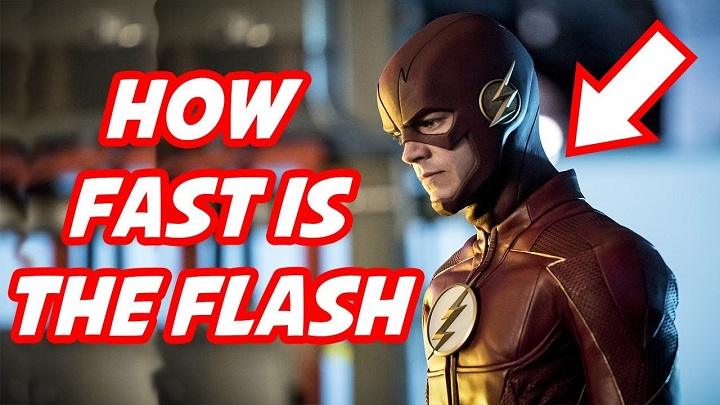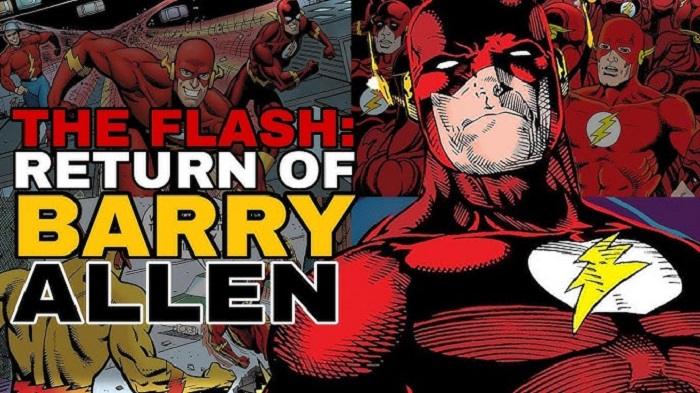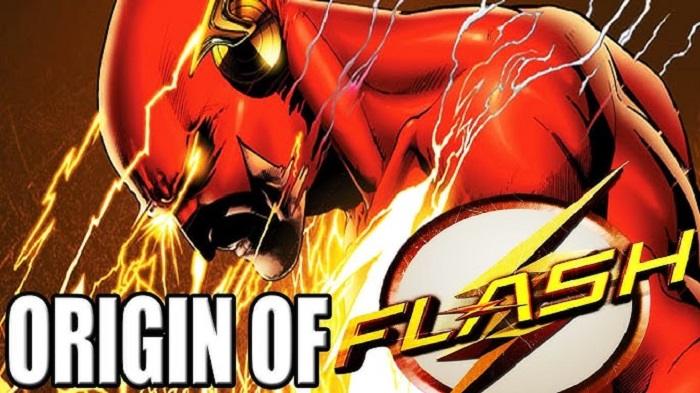The Flash, also known as the Scarlet Speedster, is one of the most iconic superheroes in the DC Universe. Known for his incredible speed and quick reflexes, The Flash has fascinated fans for decades. With various iterations of the character, from Jay Garrick in the Golden Age of comics to Barry Allen and Wally West in the Silver and Modern Ages, The Flash has remained a staple of superhero lore. This blog post will delve into the different versions of The Flash, explore his super-speed abilities, and examine his influence on pop culture.
The Origins of The Flash
The Flash first appeared in “Flash Comics #1” in 1940, created by writer Gardner Fox and artist Harry Lampert. The original Flash was Jay Garrick, a college student who gained super-speed abilities after inhaling hard water vapors in a laboratory accident. Jay Garrick’s Flash was a founding member of the Justice Society of America (JSA), the first superhero team in comic book history.
In 1956, during the Silver Age of comics, the character was reimagined as Barry Allen, a forensic scientist who gained super-speed after a lightning bolt struck a shelf of chemicals that spilled on him. Barry Allen’s Flash introduced the iconic red and yellow costume and became a founding member of the Justice League of America (JLA). This version of The Flash is the most well-known and has had the most significant impact on the character’s legacy.
The Different Versions of The Flash
Jay Garrick: The Golden Age Flash
Jay Garrick, the first Flash, wore a simple red shirt and blue pants with a metal helmet adorned with wings, resembling the Roman god Mercury. As a member of the JSA, Jay Garrick fought against crime and injustice, setting the foundation for future versions of The Flash. Though he lacked the advanced abilities of later Flashes, Garrick was fast enough to outpace bullets and perform incredible feats of speed. He remains a beloved character, often appearing as a mentor to newer speedsters.
Barry Allen: The Silver Age Flash
Barry Allen is arguably the most famous incarnation of The Flash. His debut marked a turning point in the history of DC Comics, sparking the Silver Age of comic books. Barry’s origin story was more scientifically grounded, linking his powers to the Speed Force, a mysterious energy field that grants speedsters their abilities. Barry could run at speeds faster than light, vibrate through solid objects, and even travel through time. His heroic sacrifice during the “Crisis on Infinite Earths” storyline in the 1980s, where he ran so fast that he dissipated into the Speed Force to save the multiverse, solidified his status as a legendary hero.
Wally West: The Modern Age Flash
Wally West, Barry Allen’s nephew and sidekick known as Kid Flash, took up the mantle after Barry’s death. Wally initially struggled with his powers but eventually became the fastest Flash ever. He could surpass Barry’s speed, perform infinite mass punches, and manipulate the Speed Force in ways previously thought impossible. Wally’s tenure as The Flash was marked by his development from a brash young hero to a seasoned and wise protector of Central City.
Bart Allen: The Future Flash
Bart Allen, also known as Impulse and later Kid Flash, is Barry Allen’s grandson from the 30th century. Bart was a speedster from birth, and his hyper-accelerated metabolism caused him to age rapidly. He was eventually cured and took on the role of The Flash for a brief period. Though his time as The Flash was short-lived, Bart brought a youthful energy and optimism to the role, and he remains a beloved character among fans.
How Fast is The Flash?
The Speed Force
The Flash’s incredible speed is derived from the Speed Force, an extra-dimensional energy that all speedsters tap into. The Speed Force allows The Flash to run at incredible speeds, defy the laws of physics, and perform superhuman feats. It’s a mysterious force that connects all speedsters, giving them their powers and serving as a source of unlimited energy.
Breaking the Speed of Light
One of the most remarkable aspects of The Flash’s abilities is his capacity to break the speed of light. In various comics, The Flash has been depicted as running faster than light, allowing him to travel through time and even between different dimensions. For instance, Barry Allen has been shown running so fast that he enters the Speed Force, effectively transcending the limitations of time and space.
The Infinite Mass Punch
A notable demonstration of The Flash’s speed and power is the Infinite Mass Punch, a move that allows him to deliver a punch with the force of a white dwarf star. By accelerating to near-light speeds, The Flash increases his mass to infinite proportions, making the punch extremely powerful and capable of devastating even the most robust opponents.
Running Across Dimensions
The Flash’s speed isn’t limited to our reality. He can run across dimensions, accessing alternate universes and parallel worlds. This ability has been a crucial plot device in numerous storylines, such as the “Crisis on Infinite Earths” and “Flashpoint,” where The Flash’s ability to alter reality and traverse dimensions has had far-reaching consequences.
Time Travel
One of the most intriguing abilities of The Flash is his power to time travel. By running faster than the speed of light, he can break the time barrier and travel to different periods in history or the future. This ability has been both a blessing and a curse, as it allows The Flash to prevent disasters but also causes significant disruptions to the timeline, leading to alternate realities and paradoxes.
The Influence of The Flash on Pop Culture
Comic Books
The Flash has had a profound influence on comic books, particularly in his role as a catalyst for the Silver Age of comics. The success of Barry Allen’s Flash led to the revival of other superheroes and the reimagining of many classic characters. The Flash’s stories often explore complex themes such as sacrifice, heroism, and the consequences of altering reality, setting a standard for superhero storytelling.
Television and Film
The Flash has been a staple of television since the 1960s, with multiple live-action adaptations. The 1990s TV series, starring John Wesley Shipp as Barry Allen, introduced a new generation to The Flash. More recently, the CW’s “The Flash,” starring Grant Gustin, has become a fan favorite, delving deep into the character’s lore and introducing the Speed Force and various speedsters to a broader audience. The Flash has also appeared in the DC Extended Universe (DCEU) films, portrayed by Ezra Miller, adding a cinematic dimension to the character’s legacy.
Animation
The Flash has also made significant appearances in animated series, such as “Justice League” and “Justice League Unlimited,” where his quick wit and speed made him a fan favorite. These series helped solidify his role as a central figure in the Justice League and showcased his abilities and personality to younger audiences.
Video Games
The Flash has appeared in numerous video games, from fighting games like “Injustice: Gods Among Us” to action-adventure titles such as “LEGO DC Super-Villains.” These games often highlight his speed and unique abilities, allowing players to experience what it’s like to move at superhuman speeds.
Merchandising
The Flash’s image has been a significant part of merchandising for DC Comics. From action figures and toys to clothing and accessories, The Flash’s logo and likeness are instantly recognizable, symbolizing speed, agility, and heroism. The character’s popularity has only grown over the years, making him a staple in superhero merchandise.
The Legacy of The Flash
The Flash’s legacy is not just limited to his incredible speed and heroic deeds. He represents the idea that ordinary individuals can achieve extraordinary things when they tap into their inner potential. Whether it’s Barry Allen, Wally West, or Jay Garrick, The Flash teaches us the importance of perseverance, bravery, and selflessness. The character’s ability to break barriers, both literally and metaphorically, has inspired countless readers and viewers to push beyond their limits and strive for greatness.
Related Post:
David Corenswet’s Superman Costume: Privacy, Public Curiosity, and Professional Impact
The Drew Carey Show: Privacy, Public Curiosity, and Professional Impact
The Flash, with his incredible speed and compelling storylines, has become one of the most beloved characters in the DC Universe. His ability to transcend time, space, and even reality itself makes him a unique and fascinating superhero. From his origins in the Golden Age of comics to his current status as a pop culture icon, The Flash continues to captivate audiences around the world. His influence on comic books, television, film, animation, video games, and merchandise is a testament to his enduring appeal and the universal themes of hope and heroism that he embodies. Whether racing against time to save the multiverse or simply outrunning a villain, The Flash proves that with enough speed and determination, anything is possible.




